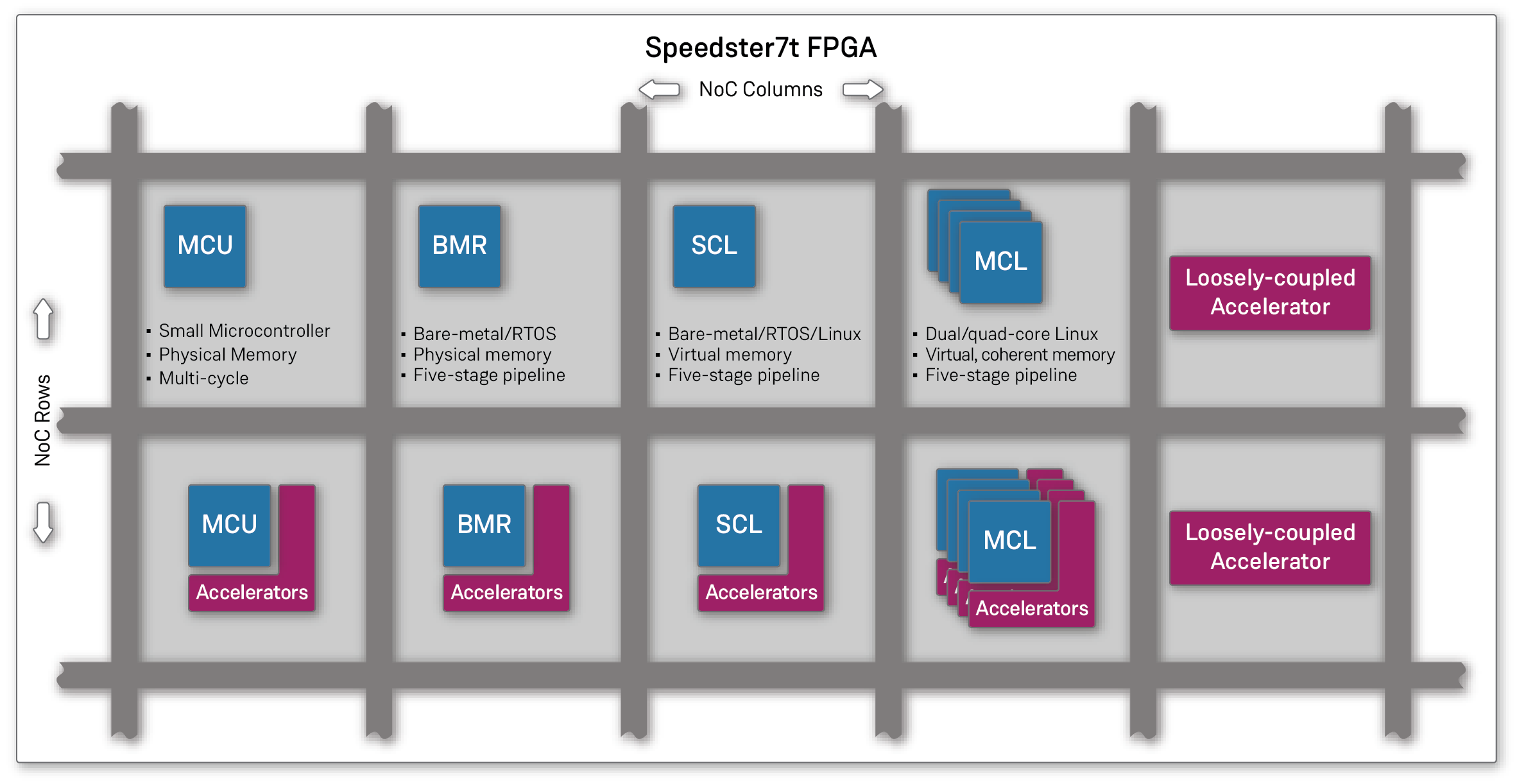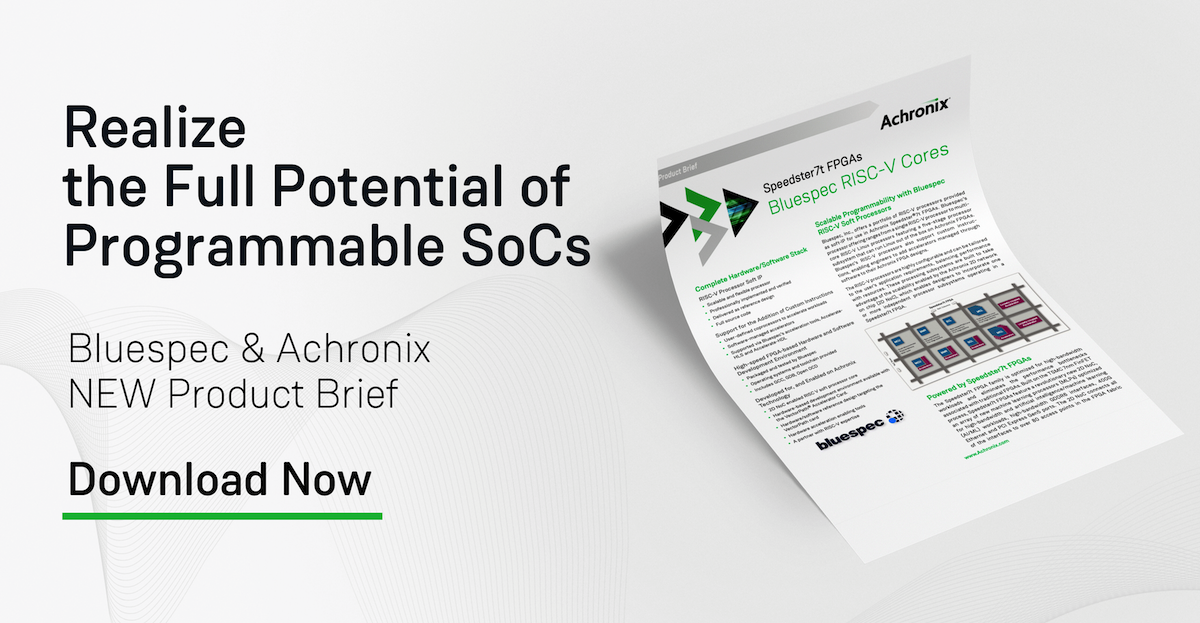Bluespec’s RISC-V Processors for Achronix
In partnership with Bluespec Inc., Achronix introduces a scalable suite of Linux-capable RISC-V processors tailored for the Achronix Speedster®7t FPGA family. Our solution promises to not just meet expectations but redefine them.

Seamless Integration, Boundless Scalability
Bluespec RISC-V soft processors are meticulously designed to sync with the Achronix 2D network-on-chip (NoC) architecture, allowing effortless integration and scalable processing for your FPGA designs. Embrace the simplicity and boost your productivity with the ability to add one or more RISC-V cores into the FPGA fabric without compromising performance.
Customizable Processors for Your Unique Needs
Tailor your processing power with our highly configurable RISC-V processors. Whether it’s a single-core setup or a multicore complex capable of running Linux, our processors are built to suit your application's exact requirements. With support for custom instructions, take control and drive accelerators through software for your Speedster7t FPGA designs.
Get Started with Bluespec’s RISC-V soft processors for Achronix FPGAs
Our experts are happy to advise you on how Achronix can help with your toughest design challenges.
Why Choose Achronix and Bluespec?
- High-Speed Connectivity – Our FPGAs boast up to 20 Tbps of bandwidth, making high-speed data transport and connectivity a reality.
- Programmable SoCs – Transform Speedster7t FPGAs into full-fledged programmable system-on-chips (SoCs) by integrating Bluespec’s acceleration-ready RISC-V soft cores.
- Reduced Time-to-Market – Expedite deployment with our solutions, designed to help developers accelerate RISC-V adoption across varied applications.
- Efficient Processor Communication – The 2D NoC ensures high-bandwidth and low-latency communication between multiple RISC-V cores and other FPGA resources. This is critical for applications that require coordinated processing across multiple cores, improving overall system performance.
- Scalable Multi-Core Architectures – With the 2D NoC facilitating efficient data movement, designers can easily scale their RISC-V-based systems within the FPGA. They can add more RISC-V cores as needed for their application without significantly increasing design complexity or compromising performance.
- Enhanced Data Processing Capabilities – The high bandwidth provided by the 2D NoC allows the RISC-V cores to quickly access large datasets from memory interfaces or external I/O, crucial for data-intensive applications such as machine learning inference, high-speed packet processing, and real-time analytics.
- Optimized Power Efficiency – The combination of Bluespec RISC-V cores and the 2D NoC leads to an overall reduction in power consumption. Efficient data routing minimizes unnecessary data movement and processing, ensuring that the FPGA operates at high efficiency, which is especially important for edge computing devices and applications where power resources are limited.
- Simplified System Design and Integration – The architectural coherence between the 2D NoC and the RISC-V cores simplifies the system design process. Developers can focus on leveraging the computational capabilities of the RISC-V cores without worrying about the complexities of data routing and interconnect bandwidth, speeding up the development cycle and reducing time to market.
Getting Started with RISC-V Development
Dive into RISC-V development with ease. Access source code from the official RISC-V repository, customize your design with our development tools, and deploy on FPGAs efficiently. Whether you’re a seasoned developer or new to FPGA, our streamlined process and comprehensive support ensure a smooth journey from concept to execution.

Target Applications
- AI/ML Acceleration – Enables efficient processing of complex models and algorithms, crucial for AI-driven applications.
- Data Center Workloads – Provides customizable acceleration to enhance cloud computing, improving performance and efficiency in data processing tasks.
- Networking and Communications – Facilitates high-speed data processing and advanced networking functionalities essential for robust communication systems.
- High-Performance Computing (HPC) – Supports demanding computational tasks in scientific research and simulations, offering scalability and high-speed processing capabilities.
